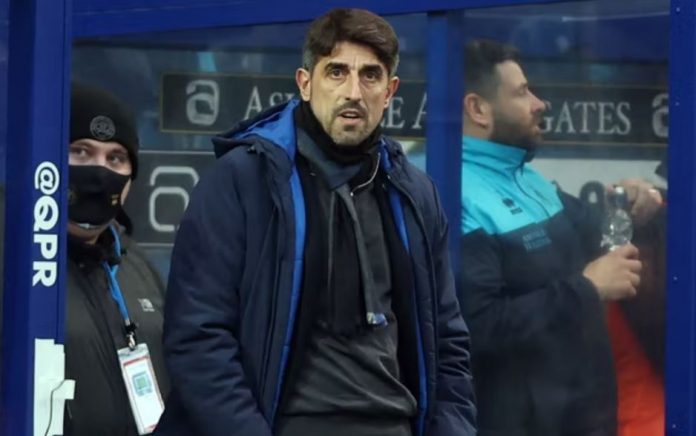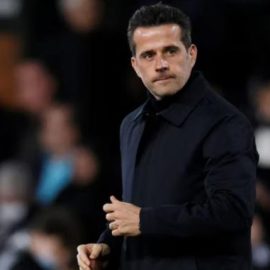So every season around 45% of the 92 clubs replace their managers. Most find another role within months, with clubs ignoring the fact that the reason why they are available is that they failed in a previous role.
Some managers are heralded as the next best thing, only to be on the scrap heap within months. Aidy Boothroyd, appointed at Watford to a great fanfare took Watford into the promised land of the Premier League against all expectations. He was held up as a potential England Manager for the future and despite their swift relegation from the top table, Boothroyd was awarded a new 3 year deal by Watford in 2007. Just over a year later he was fired as Watford in November 2008 with the club in mid-table – a position they were in when he took over.
Question – Who was the last English Manager to be voted “Manager of the Year”?
We have already seen on this very blog the craziness around the sacking of Luton’s Mick Harford who was dismissed three days after masterminding an amazing comeback away to Cambridge to win 4-3. At the time Luton sat in 6th place in the Blue Square Premier, just one point below the play offs. Since Harford’s dismissal the club have won a few, drawn a few and lost a few and despite the appointment of Richard Money as manager, the team still sit in 6th place, one point below the play off place.
So what actually goes on in the boardroom when it comes to chosing a manager, and then deciding to call time on his tenure? We often here that there have been x applications for a vacant managers job, but how do out of work (or even in work) managers go about getting a new job? Is there the equivalent of the Times Appointment section or Monster.com? Are there recruitment agents for clubs who “head hunt” for a new boss?
Question – According to the LMA quota system, who is the “top” manager in England for this season?
Amazingly as I write this only seven managers out of the 92 clubs have been in their current positions for more than five seasons. Four of these, Moyes, Wenger, Ferguson and Benitez are Premier League managers. The other three are actually quite a surprise.
Steve Tilson at Southend United has been through a promotion and a relegation with the Shrimpers but essentially has kept the club where they have always been. Accrington Stanley have well documented problems of their own off the pitch but John Coleman has overseen their rise up the non-league pyramid and then back into the Football League in his ten year tenure, a similar story to Dagenham & Redbridge’s John Still who took charge at Victoria Road in 2004.
In contrast, 47 managers out of the 88 clubs (four still haven’t appointed one at the time of writing) have been in their roles for less than a year.
The current average tenure of a Premier League manager is actually nearly 4 years (3.88) which reflects the fact that the movement between it and the Championship is relatively static – teams that come up often go down and so expectations from a manager are not too excessive. As we move down the leagues this figure changes dramatically – 1.6 years in the Championship and just 1.2 years in League One demonstrating the huge pressure there is on the clubs to move upwards.
Question – What was the average tenure of a manager in the Premier League 10 years ago?
Twenty years ago the idea of a “foreign” manager was restricted to the Scots such as Dalglish or Ferguson coming down from north of the border. In fact Aston Villa were credited with the first “overseas” appointment when they turned to Dr Jozef Venglos in July 1990. His appointment lasted just over a season in which he lost more games than he won. But he was a pioneer and the first trend in English football management had begun.
Now, young managers such as Eddie Howe at Bournemouth or Lee Clark at Huddersfield Town who are both doing excellent jobs will struggle to land a big appointment as clubs cannot afford to take a risk on an unproven man at the top level. We have moved into a different era – 10 years ago when a club was in trouble the call went out for an Atkinson or a Jim Smith to come and rescue them.
But their place in the modern game is over. Now clubs will look overseas for their appointments, bringing in an unheard of foreign manager to steady the ship – such as Avram Grant at Chelsea who was brought in to replace Mourinho or Martin Jol at Spurs.
So what we are going to look at in the next three installments of this post are the trends in football management – we will talk to a couple of managers about how the game has changed for them, how easy is it to get and keep a job and finally what the future holds for todays players who want to move into management.
So the answers to the questions above for those who didn’t use Google – Lennie Lawrence in 1992 at Middlesborough, Gus Poyet at Brighton & Hove Albion, 6.75 years.
Add Sportslens to your Google News Feed!






